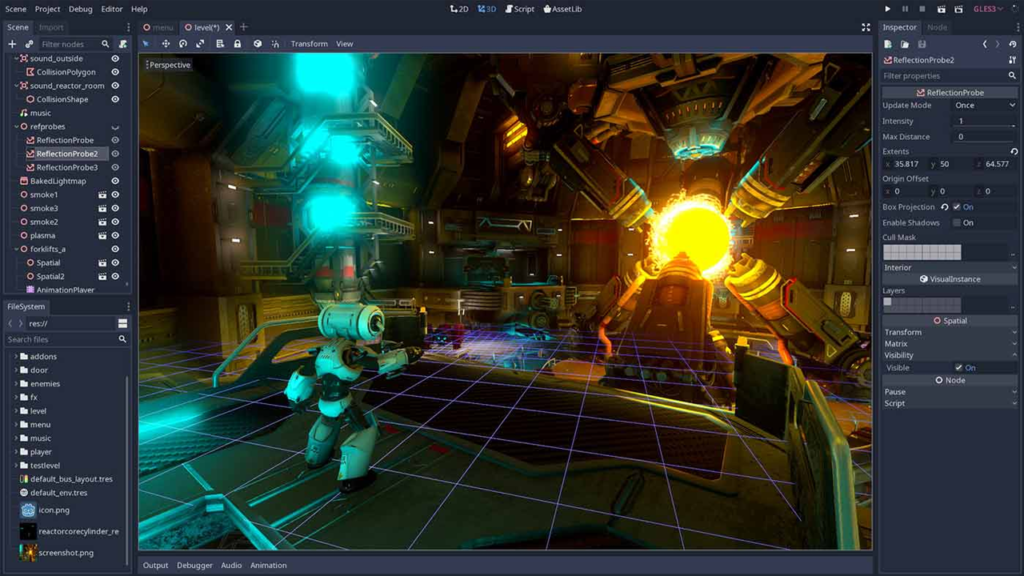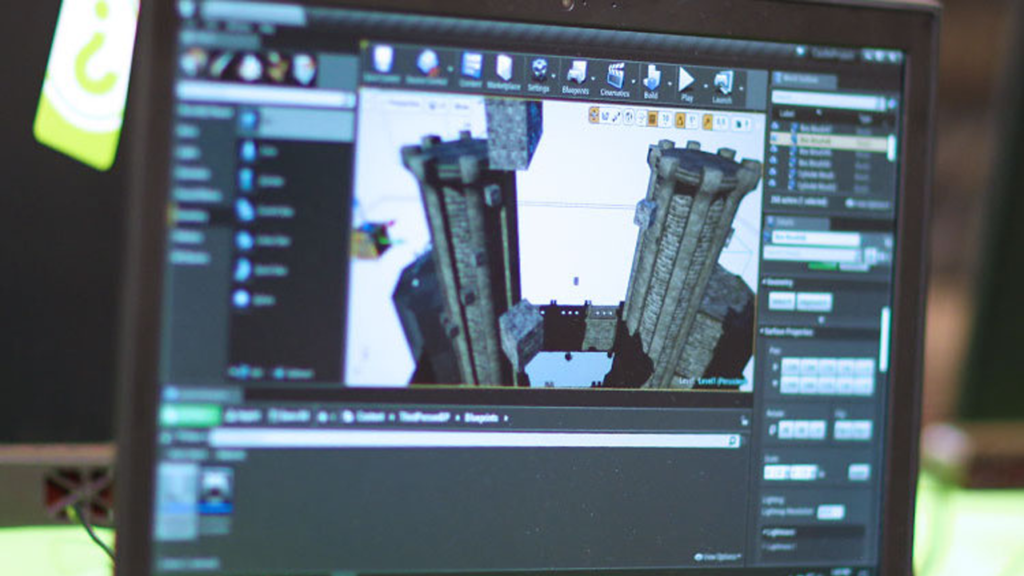Embarking on the journey of game design can be both exhilarating and daunting, especially for beginners. This guide aims to demystify the process, breaking down complex concepts into manageable steps. Whether you’re looking to create an engaging educational tool or the next indie hit, we’ll provide the foundational knowledge you need to get started. Discover the secrets to captivating your audience and turning your vision into a playable reality. Let’s unlock the creative potential within and set the stage for your game design adventure.
Understanding Your Target Audience
Before embarking on the journey of game design, it’s crucial to grasp who your game is for. Knowing your target audience is the foundation upon which all other design decisions will rest. Are you designing a game for children, teenagers, adults, or perhaps a more specific niche within these broad categories? Understanding the demographics, interests, and gaming habits of your intended players will significantly influence both the content and the mechanics of your game.
For instance, games aimed at children might prioritize bright colors, simple controls, and educational content, whereas games for adults could explore more complex themes, sophisticated mechanics, and deeper narratives. It’s also important to consider the platforms your audience prefers, whether it be mobile devices, PCs, or consoles, as this will affect the accessibility and design of your game. Conducting market research and analyzing existing successful games within your target demographic can provide invaluable insights into what your audience values in a gaming experience.
Furthermore, engaging directly with your potential players through surveys, focus groups, or social media can offer direct feedback on what they are looking for in a new game. This interaction not only helps in refining your concept but also builds a community around your game before its release.
| Demographic | Preferences | Popular Platforms |
|---|---|---|
| Children (3-12) | Bright colors, simple puzzles | Mobile, Tablets |
| Teenagers (13-19) | Competitive multiplayer, social elements | Consoles, PC |
| Adults (20-35) | Deep narratives, complex mechanics | PC, Consoles |
| Seniors (60+) | Brain teasers, slow-paced gameplay | Mobile, Tablets |
| Hardcore Gamers | Challenging, competitive, in-depth lore | PC, Consoles |
In-depth knowledge of your target audience will not only guide the design and development of your game but also inform your marketing strategies, ensuring that your game reaches its intended players. Tailoring your game to meet the specific needs and preferences of your audience can greatly increase its chances of success.
Additional Insights on Understanding Your Target Audience
Gaining a nuanced understanding of your target audience extends beyond demographics. It involves delving into the psychological motivations and emotional triggers of your potential players. What drives them to play games? Is it the thrill of competition, the joy of exploration, or the satisfaction of problem-solving? By aligning your game’s core mechanics and narrative with these motivations, you can create a more engaging and compelling experience for your audience.
Moreover, keeping abreast of trends within your target demographic can help you anticipate shifts in preferences and adapt your game accordingly. The gaming industry is dynamic, with new trends and technologies emerging regularly. Staying informed and flexible can help you adjust your game’s design to stay relevant and appealing to your audience over time.
Designing Intuitive Gameplay Mechanics

Creating intuitive gameplay mechanics is a cornerstone of game design that ensures players can engage with the game effortlessly, making their experience both enjoyable and memorable. These mechanics are the rules and systems that players interact with, and they dictate how the game responds to those interactions. The goal is to make these rules feel natural and intuitive, allowing players to understand and master them without excessive explanation or frustration.
To achieve this, it’s essential to start with a clear vision of what you want your game to be. Consider the core mechanics that will define the player’s experience. Are you designing a fast-paced platformer, a strategic role-playing game, or something entirely different? Each genre has established conventions that can serve as a starting point, but innovation within these frameworks can set your game apart. Testing these mechanics early and often with real players is crucial. Feedback will help you refine the mechanics to ensure they are engaging and intuitive.
Another key aspect is balancing complexity and depth. Mechanics should be easy to learn but hard to master, providing a satisfying learning curve for the player. This balance keeps the game accessible to beginners while still offering challenges for experienced players. Remember, the goal is to create a seamless experience that players want to return to, not a set of arbitrary rules that feel like a chore to learn.
- Identify the core mechanics of your game based on its genre.
- Ensure these mechanics are easy to understand but offer depth and complexity.
- Use playtesting to gather feedback and refine the mechanics.
- Observe how players interact with your game to make intuitive improvements.
- Balance the challenge to keep the game engaging for players of all skill levels.
Balancing Challenge and Accessibility
Creating a game that is both challenging and accessible is crucial for engaging a wide audience. To achieve this balance, designers must carefully consider the difficulty curve, ensuring that the game gradually introduces complexities, allowing players to learn and adapt. This does not merely mean making early levels easy and later ones hard; it involves designing challenges that are intrinsically rewarding and teach the necessary skills to overcome future obstacles. Accessibility features, such as adjustable difficulty levels, subtitles, and customizable control schemes, also play a vital role in making games more approachable for players with different abilities and preferences.
Moreover, feedback mechanisms are essential in fine-tuning the balance between challenge and accessibility. Playtesting with a diverse group of players can provide valuable insights into how different people experience the game, highlighting areas that may be too difficult or too easy. Implementing a system where players can report frustrations and triumphs can guide developers in adjusting gameplay elements to maintain an optimal level of engagement. Remember, the goal is to create a game that is welcoming to newcomers while still offering depth and complexity for experienced players.
Ultimately, the balance between challenge and accessibility is what makes a game enjoyable for a broad spectrum of players. By focusing on these aspects, developers can ensure that their game offers a rewarding experience that is both inviting and stimulating.
Further Insights on Balancing Challenge and Accessibility
Delving deeper into the concept of balancing challenge and accessibility, it’s evident that this equilibrium is dynamic and varies greatly across genres and individual player experiences. Understanding player psychology and incorporating elements that cater to various learning styles and gaming preferences can enhance this balance. For instance, providing multiple paths to solving a puzzle or completing a level can accommodate different strategic approaches, making the game more inclusive. Simultaneously, such flexibility can introduce unique challenges, keeping the gameplay engaging and unpredictable.
Advanced Strategies in Game Design
Exploring advanced strategies in game design reveals the complexity of integrating accessibility without compromising the game’s challenge. Techniques such as adaptive difficulty, where the game’s challenge level adjusts based on the player’s performance, can offer a tailored experience that keeps the game accessible and challenging for everyone. This approach requires a sophisticated understanding of game mechanics and player behavior to implement effectively. Additionally, fostering a community around the game can provide ongoing feedback and support, allowing for iterative improvements that refine the balance between challenge and accessibility over time.
| Feature | Benefit | Example |
|---|---|---|
| Adjustable Difficulty | Makes the game accessible to players of various skill levels. | Difficulty settings that can be changed at any time. |
| Subtitles and Visual Aids | Assists players with hearing difficulties and enhances clarity. | Customizable subtitles and iconography for better understanding. |
| Customizable Controls | Allows players with different physical abilities to enjoy the game. | Remappable buttons and gesture controls. |
| Multiple Solution Paths | Accommodates various strategic approaches and learning styles. | Levels that can be solved through puzzle-solving or combat. |
| Feedback Mechanisms | Provides developers with insights to adjust game balance. | In-game surveys and a feedback button. |
Incorporating Engaging Tutorial Elements

Designing a game for beginners can be a challenging task, particularly when it comes to creating tutorial elements that are both engaging and educational. The key is to introduce the game’s mechanics in a way that feels natural and intuitive, rather than overwhelming the player with too much information at once. An effective tutorial should guide the player through the basic controls and objectives, gradually increasing in complexity as the player becomes more comfortable with the game.
To achieve this, consider implementing interactive tutorials that allow players to learn by doing. This hands-on approach is far more effective than lengthy text explanations or passive video demonstrations. By setting clear, achievable goals within the tutorial, you can motivate players to continue learning and exploring the game’s features. Additionally, feedback is crucial; letting players know when they’ve done something correctly—or incorrectly—helps reinforce learning and encourages improvement.
Another important aspect is to ensure that the tutorial is seamlessly integrated into the game’s narrative or setting. This not only makes the learning process more enjoyable but also helps to immerse the player in the game world from the very beginning. Crafting a tutorial that is both informative and entertaining can significantly enhance the player’s overall experience and retention.
- Interactive tutorials that emphasize hands-on learning
- Setting clear, achievable goals within the tutorial
- Providing immediate feedback to encourage improvement
- Integrating the tutorial seamlessly into the game’s narrative
- Making the tutorial entertaining as well as informative
Integrating engaging tutorial elements is not just about teaching the player how to play the game; it’s about creating an inviting and memorable first experience. The tutorial is the player’s introduction to the game world, and as such, it should reflect the quality and creativity of the game itself. By focusing on interactive, goal-oriented tutorials that are well integrated into the game’s setting, developers can ensure that players are not only well-prepared to tackle the game but are also more likely to remain engaged and invested in the gameplay long after the tutorial ends.
Gathering Feedback and Iterating
One of the most critical steps in designing a game for beginners involves gathering feedback and iterating on the design based on that feedback. This process allows designers to understand how real players interact with their game, highlighting any issues or areas for improvement that might not have been apparent initially. It’s essential to approach this phase with an open mind and a willingness to make changes, even if it means revisiting aspects of the game you were initially satisfied with.
To effectively gather feedback, consider implementing a variety of methods such as surveys, direct observations, and forums where players can discuss their experiences. This multi-faceted approach ensures that you receive a broad spectrum of insights, covering different aspects of the gaming experience. From usability to entertainment value, each piece of feedback is a valuable tool for refining your game.
Iterating on your game design is not a one-time task but rather a continuous cycle of improvement. After incorporating feedback, it’s crucial to test the changes and analyze the results to ensure they have the desired effect. This iterative process may reveal new opportunities for enhancement, driving your game closer to perfection with each cycle. Remember, the goal is not just to fix problems but also to elevate the overall player experience, making your game more engaging and enjoyable.
Additional insights into gathering feedback and iterating underscore the importance of maintaining flexibility in your design process. Being overly attached to your initial concepts can hinder progress. Instead, view feedback as an invaluable resource for growth. This iterative cycle not only improves the game but also deepens your understanding of game design, making you a more adept designer in the long run.
| Feedback Method | Advantages | Disadvantages |
|---|---|---|
| Surveys | Can reach a large number of people quickly. | May not provide in-depth insights. |
| Direct Observations | Provides context to player behavior and reactions. | Time-consuming and requires a controlled environment. |
| Forums | Encourages detailed feedback and discussions. | Can be dominated by vocal minorities. |
| Playtesting Sessions | Allows for immediate feedback in a real-world setting. | Limited by the number of participants you can manage. |
| Analytics | Offers objective data on how players interact with your game. | May require interpretation and does not explain the ‘why’ behind behaviors. |
In conclusion, gathering feedback and iterating on your design is a pivotal part of creating a successful game, especially for beginners. By embracing this process, you not only enhance the quality of your game but also facilitate a deeper connection with your players. This cycle of feedback and improvement is the cornerstone of game design, pushing you to continually refine and elevate your game to new heights. Remember, the most successful games are those that are crafted through an ongoing dialogue with the gaming community, ensuring that the final product is one that players will love and enjoy.

Is a game developer and writer with over seven years of experience in the gaming industry. Specializing in game design, development trends, and emerging technologies. He has worked on indie game projects and larger development teams, sharing his insights to help aspiring developers navigate the evolving world of game creation. Ethan’s articles focus on practical tips, game mechanics, and tools to inspire creativity in the gaming community.






